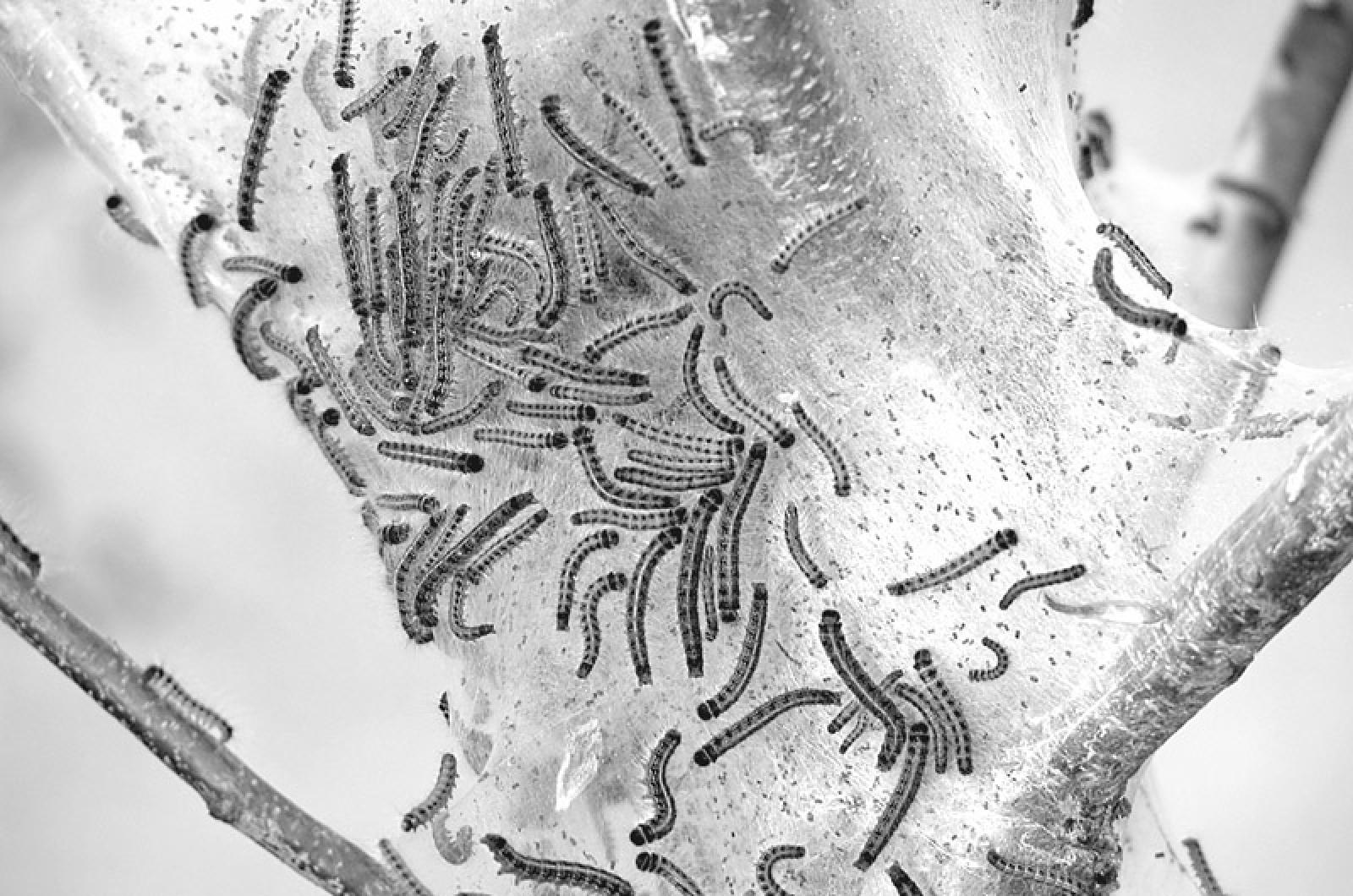Revenge can be so sweet. That would explain the glee felt by folks who have been battling a beast and may just have unknowingly gotten the upper hand. Reports are coming in of trees covered with dead gypsy moth caterpillars (heads facing down), and many folks couldn’t be happier at the caterpillars’ death. Their passing may mean that the trees in the yard may survive to see another photosynthetic day.
Gypsy moths wouldn’t have been here in the first place if it wasn’t for Leopold Trouvelot, who was the nineteenth-century equivalent of a nightmare neighbor.
He didn’t let his dog out without its leash to do its business on his neighbors’ lawns, nor did he have late night parties that would keep them up. It wouldn’t even be fair to assume that he had bad intentions. But still, his actions have had a terrible impact on the rest of us, saddling us with a true biological burden.
Trouvelot was singularly responsible for bringing gypsy moths to Massachusetts. He was an amateur lepidopterist (moth and butterfly scientist) who lived in Medford in 1896, experimenting with silk production from captive gypsy moths. He is blamed with inadvertently introducing gypsy moths when some of the more than 1 million gypsy moth larvae he kept in his backyard escaped.
Within 10 years, the escapees and their offspring had begun to decimate the foliage of trees in the neighborhood and weaken and kill trees across the region.
The destruction wrought by these caterpillars was so bad that in 1910 scientists fought back by introducing a Japanese fungus, Entomophaga maimaiga, that was known to kill gypsy moths by penetrating the caterpillar’s exoskeleton, multiplying, and devouring the caterpillar from the inside leaving just a hollow shel. The fungus is found in soils and its spores can also be airborne. However, this experimental release seemed a failure after the fungus wasn’t detected in subsequent years and gypsy moth populations continued to thrive.
But a funny thing happened more than 70 years later in the late 1980s. E. maimaiga fungus was detected after a wet, cool spring and, off and on over the next 25 years it has continued to keep gypsy moth populations somewhat in check. The droughts of 2015 and 2016 kept the fungus dormant, but the good news for gypsy moth haters is that the fungus is now among us, thanks to the cool and wet spring that seems to promote the fungus’s reemergence from drought dormancy.
Studies are currently being conducted to ascertain if there is a correlation between the fungus and recent caterpillar mortality. Some scientists suggest that the activity of the fungus could reduce the density of next year’s caterpillar infestation, while others say it is too soon to tell. There is another natural possibility for the recently reported gypsy moth massacres. A virus called nucleopolyhedrosis (NPV) also liquefies the interior of the caterpillars, and the goo drips down and affects other caterpillars.
On the plus side, whether the virus or fungus is the blame, the result might be fewer invasive gypsy moths. On the other side, the thought of liquefied caterpillar syrup dropping on our heads is about as disturbing as the caterpillar frass (droppings) that rain down from a healthy population.
Tree lovers can be grateful for both the virus and the fungus this year — and maybe next year — for helping ameliorate Leopold’s lapse. And although we still don’t have the big picture of what’s going on in this case, at least we hope to still be able to see both the forest and the trees.
Revenge may indeed be best served cold, or in the dead, empty carcasses of this invasive species.
Suzan Bellincampi is director of the Felix Neck Wildlife Sanctuary in Edgartown.




Comments
Comment policy »